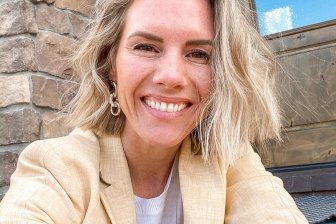As the race to the Moon heats up again, new space research may help in the prevention and treatment of bone diseases.
A Canadian study published in Nature Communications on Aug. 9 suggested that the human body can recover from bone loss by using fat stored in the bone marrow tissue.
Researchers at The Ottawa Hospital and the University of Ottawa tracked 14 astronauts who went on six-month long missions between 2015 and 2022.
They found that when the astronauts landed back on Earth, they had experienced significant bone loss and anemia – which is a depletion of red blood cells. But they started recovering to normal levels upon return to the Earth’s surface.
Interestingly, what the Ottawa researchers also discovered for the first time was that exposure to space had caused a 4.2 per cent reduction in the astronauts’ bone marrow fat more than a month after their return to Earth.
“The first explanation we have for that is … the fat could be used as a local source of energy because powering an increase in red blood cell production and making new bones is very energy-intensive and the energy has to come from somewhere,” said Dr. Guy Trudel, a rehabilitation physician at the Ottawa Hospital and co-author of the study.
Trudel said it’s a “significant new piece to the puzzle” that scientists did not know about before and it has important implications for both space exploration and chronic medical conditions on Earth.

Osteoporosis, obesity, glucose intolerance and metabolic syndrome have all been linked to increase in fat content in the bone, but without a clear explanation of what role it plays in these conditions.
“This is a good example of a model that will help us understand better some of those conditions on Earth,” Trudel said.
He believes it won’t be long before their findings can be applied in treatments and rehabilitation. It can also pave the way for a secondary application along with existing medication for diabetes, he said.
“We may not (be) too, too far from being able to intervene once we understand the problem a bit better.”

Many countries — and companies — are now starting or renewing their space programs, competing to reach the Moon’s South Pole, where there might be ice, and then on to Mars.
The United States (and aligned countries, including Canada) are hoping to land humans back on the moon by 2025, the Chinese by 2030.
One direct implication of the Ottawa study, which was funded by the Canadian Space Agency, is to better prepare astronauts physically for longer missions, said Trudel.
Research has shown that human bones lose on average one to five per cent of mineral density per month during spaceflight. Muscles can also weaken due to weak gravity on long missions.
This is where doing the right exercises can come in handy and studies are ongoing on that front.
“We are still actively involved in an upcoming research to try and improve those countermeasures to prevent the changes related to space,” Trudel said.
— with files from Global News’ Nathaniel Dove
© 2023 Global News, a division of Corus Entertainment Inc.



